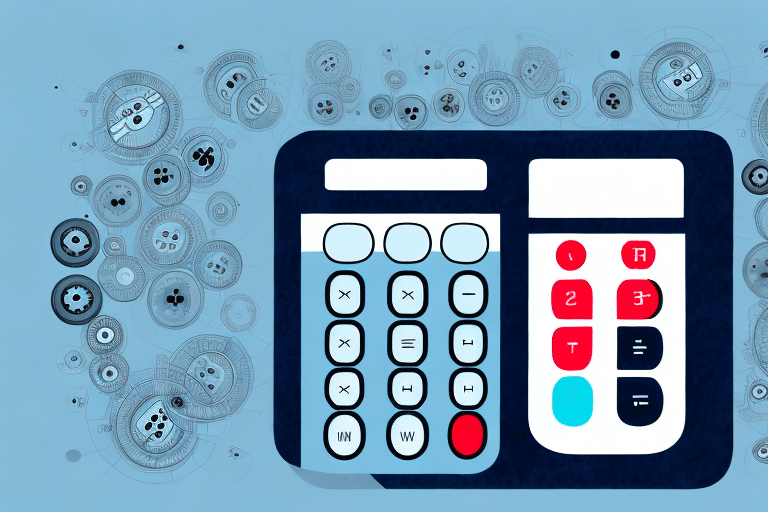How to Use a DIMS Calculator to Make Accurate Measurements
Accurate measurements are essential in many applications, including construction, manufacturing, and engineering. Even in everyday life, measurements are necessary for tasks like cooking or DIY projects. However, humans are not always capable of making precise measurements, which is where a DIMS (Digital Image Measuring System) calculator comes in handy. In this article, we will explore the importance of accurate measurements, how a DIMS calculator works, and provide tips on how to use one correctly to obtain the most accurate measurements possible.
The Importance of Accurate Measurements
Applications in Various Industries
Accurate measurements are critical in industries such as construction, manufacturing, and engineering. For instance, in construction, even the slightest measurement error can lead to structural issues or collapse. In manufacturing, imprecise measurements can result in defective or malfunctioning products, affecting both safety and quality.
Impact on Scientific and Medical Research
In scientific research, particularly in fields like physics and chemistry, precise measurements ensure that experiments are conducted correctly and that results are reliable. In medical research, accurate measurements of patient data are essential for correct diagnoses and effective treatments. Inaccurate measurements can have serious consequences, potentially leading to incorrect medical interventions.
Measurement in Culinary Arts
Accurate measurements are also vital in the culinary arts. For example, baking requires precise measurements of ingredients to ensure the desired outcome. Similarly, in mixology, accurate measurements are necessary to create consistent and delicious cocktails. Without precise measurements, the taste and quality of the final product can be compromised.
Understanding and Utilizing a DIMS Calculator
Basics of DIMS Calculators
A DIMS calculator is an electronic device that accurately calculates distances, lengths, and areas by analyzing images captured by its built-in camera. These calculators are highly precise, capable of measuring objects and surfaces to within a fraction of an inch or millimeter. Most DIMS calculators feature a display screen, data input buttons, and a camera lens.
Advanced Features and When to Use Them
Some DIMS calculators come equipped with advanced features such as volume calculation and 3D modeling capabilities. These features are particularly useful in industries like construction, engineering, and architecture, where complex measurements are often required. Understanding when and how to use these advanced features can significantly enhance measurement accuracy and efficiency.
How to Use a DIMS Calculator Effectively
Inputting Data Correctly
To use a DIMS calculator, you must first input data based on the type of measurement you intend to take. This typically involves entering the object's size or the distance between two points. Some calculators also allow you to select the measurement unit (e.g., inches, meters) to ensure accurate results. After inputting the data, activate the device's camera and aim it at the object you wish to measure.
Choosing the Right Units
Selecting the correct measurement units is crucial to avoid inaccuracies. For example, use fractions of an inch for small objects rather than decimals, and meters for larger distances instead of feet. Always double-check the selected units before taking any measurements to ensure consistency and accuracy.
Tips for Accurate Measurement
- Ensure the Device is Level: Position the calculator perpendicular to the object being measured to avoid skewed readings.
- Use Good Lighting: Adequate lighting prevents the device from misinterpreting data, ensuring accurate measurements.
- Take Multiple Measurements: Recording several measurements and averaging them can enhance accuracy.
- Practice Regularly: Familiarity with the device and its features improves measurement precision over time.
Avoiding Common Mistakes
- Incorrect Data Input: Always double-check the data entered into the calculator to ensure accuracy.
- Misinterpreting Results: Understand how to read and interpret the device’s output correctly.
- Using the Wrong Mode: Ensure the calculator is set to the appropriate mode for the type of measurement being taken.
Analyzing and Interpreting DIMS Calculator Results
Reading and Interpreting Measurements
After taking a measurement, the DIMS calculator will display the results in the selected units (e.g., inches, meters). Understanding how to interpret these results is essential for applying the data accurately in your projects. Ensure you know what each measurement signifies, including any area or volume calculations provided.
Calculating Area and Volume
One of the significant advantages of a DIMS calculator is its ability to calculate areas and volumes. To find the area, select the area mode and input the length and width of the object. For volume, switch to volume mode and provide the length, width, and height. The calculator will then display the results in appropriate square or cubic units.
Ensuring Consistency and Accuracy in Measurements
Using Multiple Calculators
For complex measurements, using multiple DIMS calculators can enhance accuracy. This approach allows for cross-verification of data, ensuring that measurements are consistent across different devices. Always use the same measurement units to maintain consistency.
Comparing Results for Consistency
When using multiple calculators, it’s essential to compare the results to ensure consistency. Minor discrepancies can significantly impact outcomes in sensitive applications. If discrepancies arise, consider recalibrating the devices or taking additional measurements to identify and correct errors.
Maintenance and Troubleshooting of a DIMS Calculator
Troubleshooting Common Issues
While DIMS calculators are generally reliable, they can encounter issues such as battery depletion or a dirty camera lens, leading to inaccurate readings. Regularly check the device’s battery life and keep the camera lens clean to prevent measurement errors.
Proper Maintenance and Care
To maintain the accuracy and longevity of your DIMS calculator, handle it with care. Inspect the device for any damage before use, keep it clean and dust-free, and store it in a protective case when not in use. Proper maintenance ensures that the calculator remains in optimal working condition.
Advantages of DIMS Calculators over Traditional Methods
Using a DIMS calculator offers several benefits over traditional measuring techniques. These devices provide immediate results, eliminating the need for manual data recording. Additionally, DIMS calculators can measure distances and surfaces that are challenging or impossible to measure with conventional tools, increasing both efficiency and accuracy. Overall, DIMS calculators save time and enhance the precision of measurements across various applications.
In conclusion, a DIMS calculator is a valuable tool for achieving accurate measurements in diverse applications. By following best practices for data input, choosing the right units, and maintaining the device properly, you can ensure precise and reliable measurements, thereby avoiding costly errors and improving overall project outcomes.






















